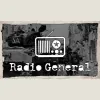
Digital Citizenship Week is October 20–24!
Join teachers worldwide to promote a healthy, positive approach to media and tech.
Take a look inside 10 images
Radio General
Pros: Lots of historical records to peruse, and the Canadian point-of-view adds fresh context to the war.
Cons: It's challenging to keep up with since the gameplay is designed to be frustrating.
Bottom Line: This is a refreshingly new approach to a WWII game that offers students a more accurate simulation of battlefield chaos.
Teachers can have students play Radio General on their own, likely at home, since part of the appeal is trying out the voice commands, which would be difficult in a crowded classroom. Note that it's possible to play the missions using just a mouse and keyboard. This increases precision and is great for those with speaking difficulties, but it removes the chaos that's baked into the design of the game.
For students playing at home, a series of maybe three or four missions could be assigned per week. Students could maintain a reflective journal about their experiences with the game that they can use for in-class discussion or a final assessment. Teachers might also make use of the game's archive of news clippings and film reels to design lessons supporting gameplay.
Radio General is a strategy game that aims to simulate the chaos of World War II battlefields. Since it was a time when armies didn't have access to satellite imagery and other modern-day communication and surveillance technologies, Radio General offers a novel way for players to control their military: verbal communication.
As a leader in the Canadian armed forces, the player sees everything from that person's point of view. The whole game takes place in a tent that's been deployed near historic battles. These battles play out through a series of missions, book-ended with information that players can use to plan. Before missions start, the player reads a file about the objectives and conditions of the mission, including details about the army's resources. After each mission, there's a debriefing about the outcome, listing casualties and promotions and the army's remaining resources. While in a mission, players control their military units by interacting with a table laid out in front of them and then clicking on a nearby radio to yell out orders, hoping the orders are clear and that the troops actually obey them. And here's the novel thing about Radio General: Players can actually speak their orders out loud through their computer microphone or a headset. Units then will respond with their general status, but the map doesn't update automatically. The player has to place and move markers for both allied and enemy units around the map, guessing where the markers should go. On top of that, sometimes radio communication is lost, and the player has to hope that their standing orders and the on-the-ground adaptation that units make are enough for a positive outcome to the mission.
The voice command feature can be turned off in favor of traditional mouse and keyboard controls. This adds precision and accessibility, but it does impact how well the game's main point is communicated.
To see how this tool works, watch our video overview of Radio General.
Radio General does a good job of teaching two main lessons: first, how to deal with uncertainty, limited information, and chaos, and second, what World War II was like for someone not on the front lines.
The player has to build a tolerance for making impossible but sound decisions, combining both strategic thinking and executive function. And they must do so while attempting to minimize confusion and miscommunication. How well they can predict or deduce their own troop movement and that of the enemy plays a huge role in mission success and minimizing casualties. Sometimes after a mission, the player is asked to write a condolence letter to the loved ones of a fallen soldier, adding a human element to the abstract nature of the military strategy portion. Between missions, the player can peruse old newspaper clippings and watch propaganda film reels about Canada's involvement during World War II. These records are great and give further context for what it was like to live in that time and how the war was perceived and reported on.
This is a game that could offer students a unique perspective not only on WWII but also on war games; however, some students might find the premise -- of fighting a war in such a clumsy and chaotic way -- frustrating. Those who don't, however, could gain a valuable, and likely new, perspective on war and themselves.

















